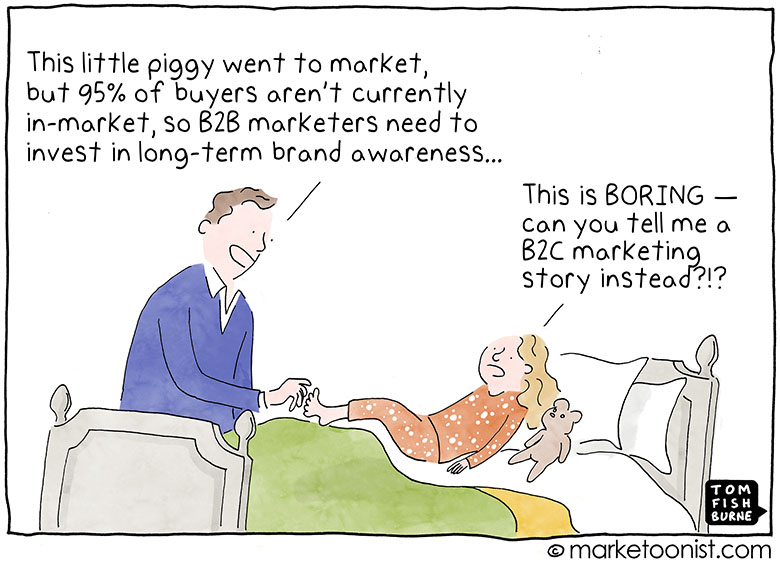
In 2021, Professor John Dawes of the Ehrenberg-Bass Institute introduced the 95:5 Rule, a simple but powerful concept that challenged conventional thinking in B2B marketing.
In his research, John showed that up to 95% of buyers are not in the market in any one time (and perhaps won’t be for months or years).
As he put it:
“This is a deceptively simple fact, but it has a profound implication for advertising. It means that advertising mostly hits people who aren’t going to buy anytime soon. And in turn, that tells us about how advertising works: it mainly works by building and refreshing memory links to the brand. These memory links activate when buyers do come into the market. So, if your advertising is better at building brand-relevant memories, your brand becomes more competitive.”
This runs counter to the short-term pitch approach taken by so much of B2B advertising — trying to drive immediate marketing leads. Marketers can’t push out-of-market buyers to buy now, and only 5% of buyers are currently in market.
As Peter Weinberg and Jon Lombardo wrote about Dawes’ work when they led the B2B Institute:
“Effective marketing increases future sales in future buying situations. How? By increasing the probability that the brand comes to mind when the buyer goes in-market. Simply put, the brand that gets remembered is the brand that gets bought. You can’t push buyers down a funnel, but you can, to quote Professor Jenni Romaniuk, ‘catch buyers as they fall’.”
This framework also expands the remit on B2B marketing to be a heckuva lot more exciting than it is often perceived. It’s not just about features and benefits and driving qualified marketing leads. It’s about long-term brand building.
I often think about a quote Eric Ryan shared when we worked together at Method:
“There are no low-interest categories — only low-interest brands.”
– Tom Fishburne, Marketoonist